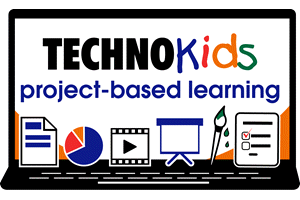New-age Teaching, Not Just Limited to Whiteboards and Markers
Introducing a modern revolution to classrooms, schools are keeping up with the trend of combining the power of technology with the teaching expertise of educators to introduce to children new ways of learning. Though whiteboards and markers are powerful tools, its scope is limited. The explanation by a teacher with the help of drawings on a whiteboard is restrained to the drawing capabilities of the teacher and physical constrains of the writing board.
When technology is integrated into classrooms, the opportunities are limitless. One can only imagine the depth and creativity that can be added to a subject to make the student thorough with the lessons. Moreover, audio-visual teaching aids have proven to be a clear winner, as the retention power of the child increases by watching videos, sound, pictures, and graphs, on a particular topic.
The use of technology also encourages the student to proactively take-up assignments and add their touch of creativity to it. Using their personal handheld tabs, students are often more actively engaged in project work when technology is integrated in school for the learning process.
The TechnoKids Computer Curriculum is a step in this direction. TechnoKids is specially designed to engage children in computer activities in sync with the K-12 school curriculum objectives. The platform focuses on project-based learning and makes available computerized lesson plans along with other resources for students. Each of the TechnoKids project kit includes a curriculum planning guide, a student workbook and handbooks, besides the integration of software into the classrooms which can be used by unlimited number of teachers & students.
Advantages of integrating TechnoKids lessons into the teaching curriculum:

Focusing on teamwork:
Project-planning requires teamwork and learning to work in a team at an early age, gives the child a good start to getting used to what it would be like in a professional office set-up. Collaborating with peers in the class to complete a ‘project’ gives an opportunity to the child to hone various skills. Sharing ideas requires good communication and the child learns to put across his point-of-view through group assignments. Some children naturally take up the role of a leader. The hidden leadership skill of the student is recognized and he may be assigned more responsible duties to further strengthen the leadership quality. Also being a good team player requires listening skills.

Adding creativity to lessons:
Technology-based projects widen the scope of the students in showcasing their talent. The ‘topic’ of research can be presented creatively without any constraints or restrictions. Original ideas to solutions are encouraged and out-of-the-box thinking is promoted in classrooms. Learners can apply their computer skills to subjects such as ‘Geography’ by showing impressive animations and 3-D models to create a magnificent visual display in class.
Making the curriculum relevant to the outside world:
Integrating technology to the entire teaching-learning process is extremely relevant in today’s tech-savvy world. Children who are trained in school to adopt software and use presentation platforms to display their homework, are more prepared for the outside world. No matter what profession they choose in the future, technology is going to play a vital role. Engineers, marketers, and doctors are all making use of technology to run their work. Hence the transition from education to workplace will be comparatively smoother for students who are familiar with new-age gadgets & platforms.
Supporting well-tested teaching methods:
Limiting the knowledge of the child to textbooks alone and testing them on their memory to recreate the answers on paper is a primitive method of learning. The modern education system offers ample opportunity to the students to not just limit their understanding to ‘workbooks’ but delve further by exploring the web. Students are encouraged to watch videos, stream documentaries, conduct research and further expand their knowledge on the subject. Schools hold debates, discussions, and group presentations to create a healthy competitive environment in class to test the child’s participative skills along with knowledge of the topic.
The integration of technology can make learning interesting for teachers and empower students to gain confidence thereby armouring themselves to face the challenges of a digitally connected world.






Recent Comments